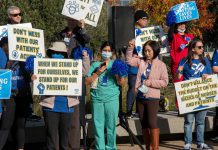My friend made a bad choice. On a trip to see family out of
state, he went out to look up old buddies. The memories of those
good times turned one beer into two, then three.
My friend made a bad choice. On a trip to see family out of state, he went out to look up old buddies. The memories of those good times turned one beer into two, then three.
In all, we’re not sure how much he had to drink that night, but the sobering reality of it all arrived on our doorstep a couple of days later.
The paper said he didn’t even slow down before plowing into the little Honda. Inside was a 19-year-old girl who was eight months pregnant. Her baby died, and she was put in a coma that ended up lasting nearly six months.
It may not seem like a big deal to climb behind the wheel on New Year’s Eve after you’ve had a few drinks, but the statistics tell a different story.
And just one death can affect the lives of so many more. In 2002, the holiday claimed 134 lives in alcohol-related traffic deaths between 6pm New Year’s Eve and 6am Jan. 2, according to the National Highway Traffic Safety Administration.
While the legal limit may be set at 0.08 for blood alcohol content, judgment and critical reflexes can be impaired with a BAC content as low as 0.02.
To put that in context: “a 160-pound man will have a BAC of about 0.04 percent 1 hour after drinking two 12-ounce beers or two other standard drinks on an empty stomach,” according to the National Institute on Alcohol Abuse and Alcoholism (NIAAA).
The effects of a drink can be amplified by certain medications as well.
More than 150 medications listed in the Physician’s Desk Reference include warnings not to be mixed with alcohol, and over-the-counter medications such as anti-histamines can increase the drowsiness associated with alcohol consumption.
Those taking the painkiller acetaminophen (Tylenol) in large doses could be putting themselves at risk for serious liver damage as well.
Despite the dangerous nature of overconsumption, having some alcohol in your diet can be a good thing, as regular consumption of small amounts can have beneficial side effects like curbing the instance of heart disease.
However, long-term overconsumption can have dire effects on the liver, leading to a tendency for all sorts of nasty ailments from viral hepatitis to liver disease to cancer.
Contrary to doom and gloom predictions about the state of the nation’s youth, alcohol consumption, like violent crime and gang involvement, has been in steady decline since the early 1980s among Americans age 14 and older.
That’s according to statistics collected by the NIAAA, a division of the Health and Human Services Department National Institutes of Health.
Californians in particular have slowed down quite a bit. Prior to 1990, we consumed 50 percent more alcohol per capita than the national average.
Today we’re right on par, but that still means each teen or adult in the Golden State drinks more than two gallons of pure ethanol a year. Beer and wine are only 4 to 6 percent alcohol by volume, to give you an idea of how much that is.
Don’t worry about having a toast this New Year’s Eve, but if that toast turns into getting toasted, be sure to call a cab or find a sober friend to drive you home.
Better yet, to eliminate as much of your risk as possible, arrange to have a designated driver if you’re going out as part of a group.
If you or a loved one has a consistent and serious problem with alcohol, get help. To find out more about the local group that will work for you, call 1-888-4AL-ANON (1-888-425-2666) or visit their Web site at www.al-anon.alateen.org. For more information on Alcoholics Anonymous meetings in the area, visit www.aa.org.












